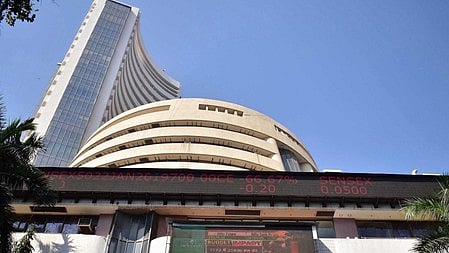Buoyed by availability of online payment options and driven by pent up demand from the pandemic, festive sales are expected to brighten up Indian markets during Diwali. Passenger vehicles registered a 92 per cent uptick in demand while fuel sales also went up by more than 22 per cent, and retail sales may also cross pre-pandemic levels. But the festive cheer has failed to ward off the shadow of gloom that has bogged down Rupee which is falling to record lows day after day.
How adequate is the government’s response?
After hovering above 82, the Rupee eventually crossed the 83 level against the US dollar on Wednesday, and is only dropping further. The depreciating currency shows no signs of bouncing back as further aggressive interest rate hikes by the US Federal Reserve, will add strength to the dollar. The Finance Minister of India, Nirmala Sitharaman argues that this doesn’t mean that the Rupee getting weaker, but instead describes it as an effect of the dollar getting stronger. She also says that the Rupee is doing better than other currencies, to allay fears amid inflation and an imminent recession.
Businesses and consumers bear the brunt
Beyond the oversimplification, what the minister has said is true since higher interest rates in the US have triggered an inflow of funds into the country, while foreign investors pull out of India. But even though the Rupee isn’t doing as bad as others, businesses, exporters and consumers in India will inevitably have to bear the brunt of the currency’s depreciation. Revenues from exports will fall since fewer dollar will flow in, and importers in other countries will use the decline of the Rupee to secure Indian goods for lower prices. Considering the depreciation, exporters will be able to earn more than 30 per cent less in dollars.
Imports will also become costly since we pay for them in dollars, which means that Indian consumers will have to shell out more for Diwali shopping. This will add to India’s price rise woes, in addition to the imported inflation elevated by global headwinds. As imports go up and exports decline in India, the balance of trade deficit could worsen to $5 billion in 2023, as an impact of the currency depreciation.
No respite during festive season?
The weak trade balance coupled with a weak Rupee has also been hitting India’s forex reserves, which fell to a two-year low late last month. Further currency depreciation will only make it worse, along with the manner in which India has planned forex inflows through FDI.
Rupee’s decline casts shadow over Diwali for consumers, despite doing better than other currencies
The weaker Rupee will hit exports and make imports costlier, eventually forcing consumers to pay more as raw materials become expensive.
FPJ Web DeskUpdated: Thursday, October 20, 2022, 03:10 PM IST

The currency depreciation will only aggravate trade deficit. |
RECENT STORIES
'Darkest Day Of My Life': Mining Mogul Anil Agarwal Mourns Passing Away Of Son Agnivesh Due To...

Indusfood 2026 To Host Food And Beverage Players From Over 120 Countries, Boosting India’s Global...

Zomato And Blinkit Parent Eternal Receives ₹3.7 Crore GST Demand From West Bengal, Says It Has...

Sensex, Nifty Likely To Be Stock-Specific In 2026, Not Broad-Based: Report

Govt Pegs India's GDP Growth Rate At 7.4 Per Cent For 2025-26
